Fact: There are 1 billion professionals on LinkedIn right now. (Up from 571 million global LinkedIn users in 2022.)
(According to LinkedIn research, the average reply rate to LinkedIn messages is 85%, which is 3 times higher than the response rate to traditional email.
In other words, LinkedIn is ROARING, and every B2B sales team should pay attention to this channel if you’re looking to drum up leads.
Our LinkedIn Stats On Average Since 2019:
Recently we had a look at all our data from our ultra-personalized Linkedin Lead Generation agency since 2019, and this is what we found…
Bear in mind, our campaigns only reach out to start sales conversations with decision-makers outside our client’s existing network.
-
45 % Connection request acceptance rate
-
48.14% Positive Reply Ratio (These replies were either meeting requests or qualified sales inquiries on their product or service.)
(Compare this to cold email, where ~ 50% of cold email campaigns have a reply rate of under 10% .)
It’s at the top of the list of platforms to go to if you’re looking for endless opportunities to generate leads, maximize your revenue, and increase your authority and reach.
According to a LinkedIn survey, 89% of B2B marketers use LinkedIn for lead generation .
Not a surprise.
But here’s the bomb: 62% of B2B marketers say LinkedIn successfully generates leads .
So, to answer your question, “Does LinkedIn Outreach work?”
YES
Prospects are likelier to reply to LinkedIn messages on Thursdays and less likely to reply on Saturdays.
This was an interesting one. According to our data, most prospects respond to Linkedin outreach messages on Thursdays and the least likely day to get a reply is on a Saturday.
- Monday: 20.30%
- Tuesday: 18.49%
- Wednesday: 19.77%
- Thursday: 20.32%
- Friday: 18.48%
- Saturday: 2.65%
Day of the Week Breakdown by Percentage of Replies
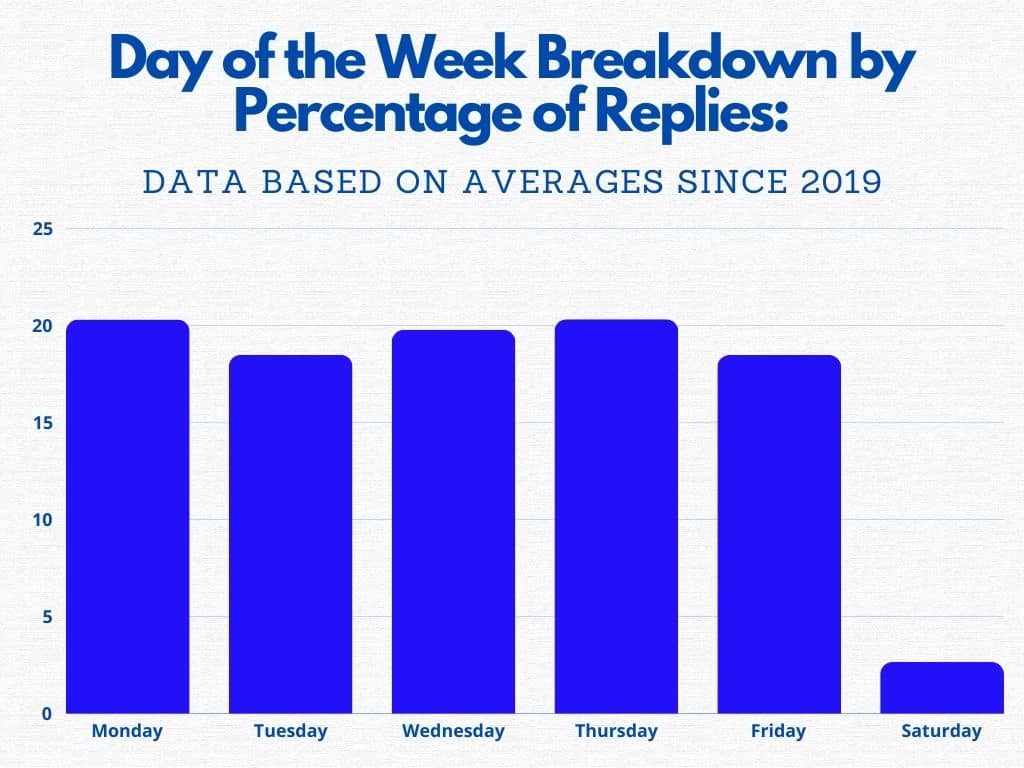
Prospects are most likely to reply at 10:00 am
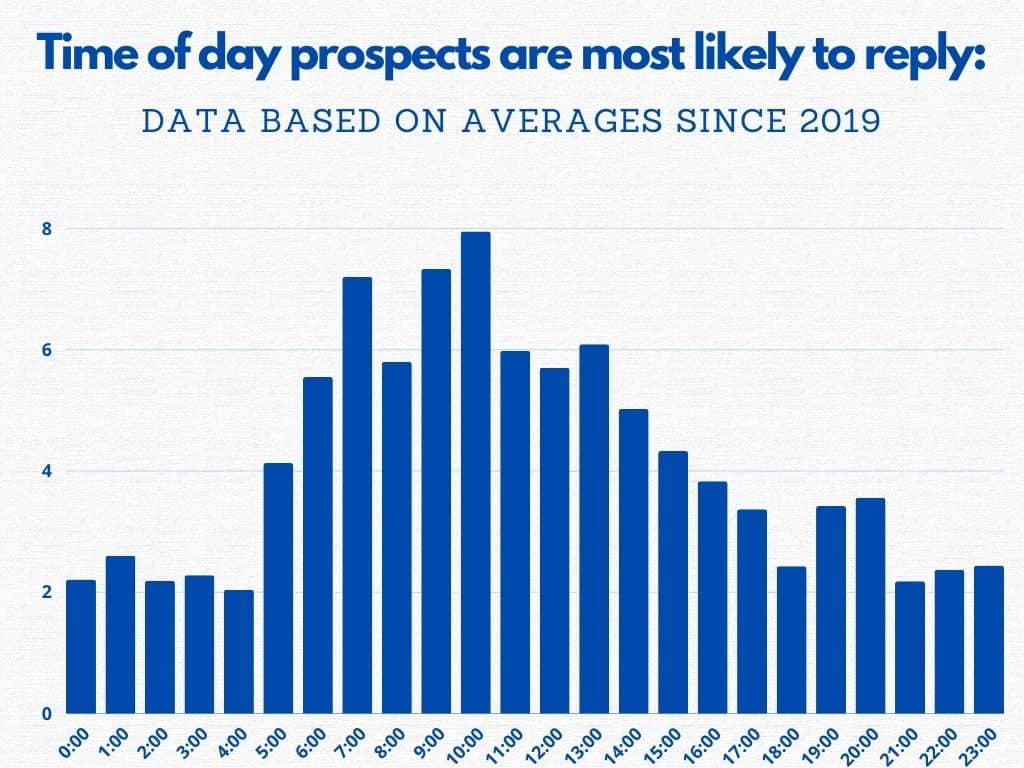
Prospects are more likely to accept a connection request on a Monday
This breakdown indicates that Monday has the highest percentage of connection request acceptance rates, followed closely by Thursday and Wednesday, suggesting a higher activity level during the start and middle of the workweek.
Saturday shows significantly lower activity, as expected for a weekend day. Note: This data is based on the local times recorded in the lead’s time zone.
- Monday: 22.04%
- Tuesday: 19.30%
- Wednesday: 19.58%
- Thursday: 19.83%
- Friday: 17.89%
- Saturday: 1.36%
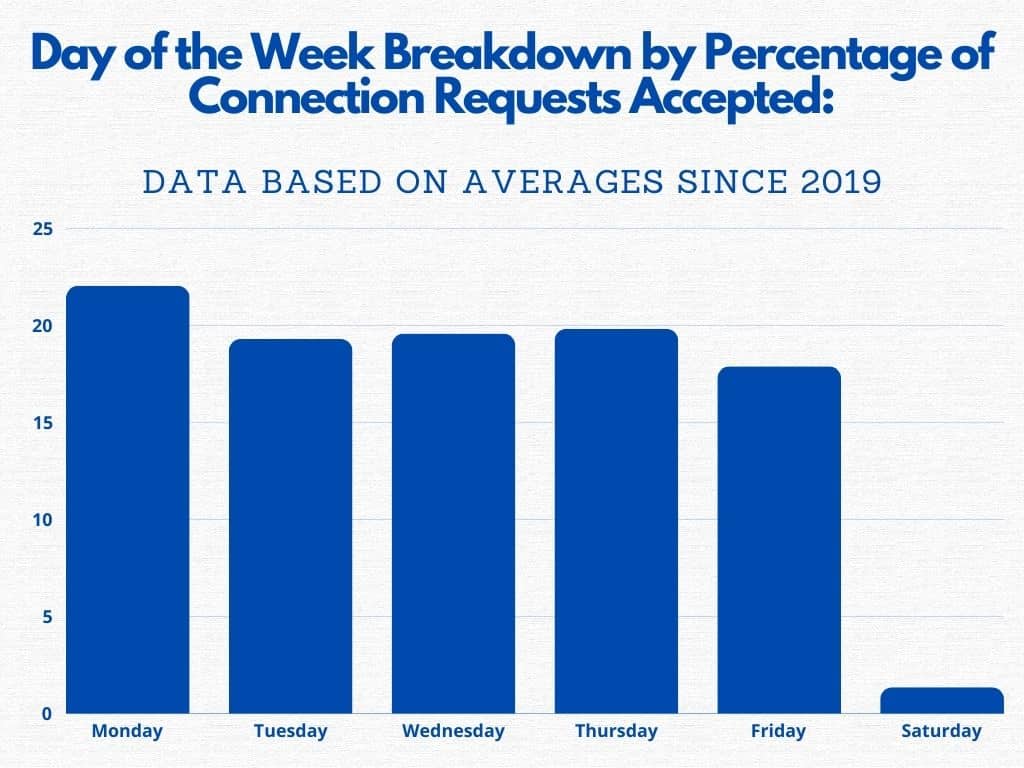
The Top 10 BEST and Worst Locations for Positive Reply Percentages
These lists provide a clearer picture of the likelihood of receiving a positive reply from different locations, with the best locations showcasing notably higher engagement rates.
Notably, some countries show a 0% positive reply rate even with the minimum criterion of 10 replies, suggesting a significant challenge in eliciting positive responses from these areas.
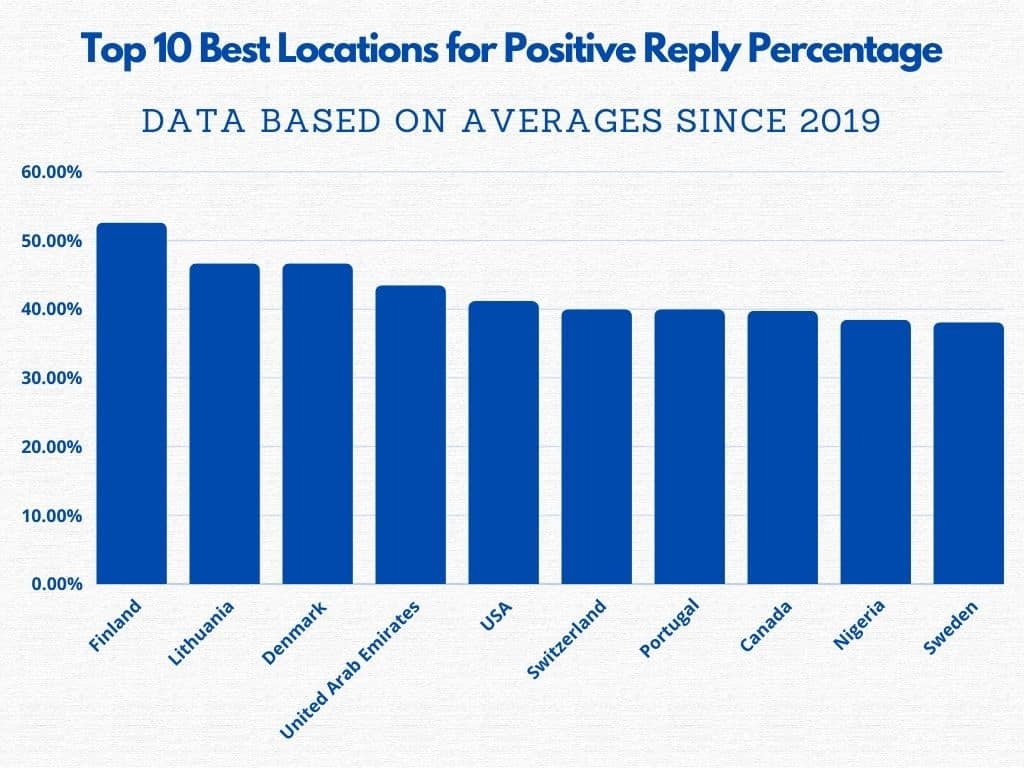
- Finland: 52.63%
- Lithuania: 46.67%
- Denmark: 46.67%
- United Arab Emirates: 43.48%
- New York City Metropolitan Area: 41.18%
- Switzerland: 40.00%
- Portugal: 40.00%
- Canada: 39.78%
- Nigeria: 38.46%
- Sweden: 38.10%

- France: 16.13%
- Brazil: 13.79%
- Israel: 13.11%
- Turkey: 12.82%
- Singapore: 11.11%
- Poland: 10.71%
- Korea: 10.00%
- Russian Federation: 8.33%
- Hungary: 0.00%
- South Africa: 0.00%
General LinkedIn statistics to know in 2025
-
Bill Gates has the most followers on LinkedIn, standing at 36 million. (Source.)
-
LinkedIn is the oldest social media platform. It was launched in 2003 and is now 22 years old. Many older platforms are seeing a decline in users, whereas LinkedIn is still seeing growth year on year.
-
7 people are hired every minute on LinkedIn (Source.)
-
According to Statista, there are more male users on LinkedIn than female.
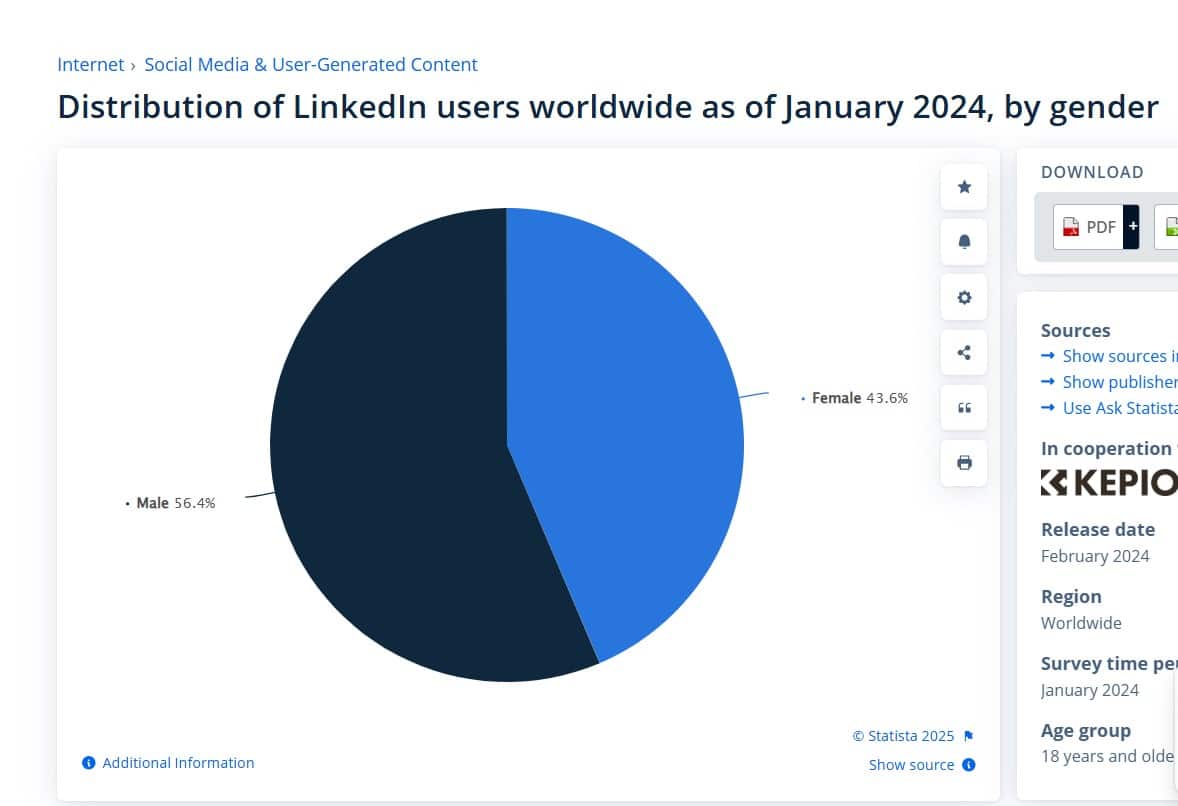
-
65 million people use LinkedIn to search for jobs on a weekly basis. (Source.)
-
41% of LinkedIn users are millionaires
-
If your LinkedIn post has an image you can expect 2x the engagement rate.
-
A survey found that 40% of B2B marketers believe LinkedIn is the best platform for generating high-quality leads.
-
On LinkedIn, it’s noted that people usually look at around 10 pieces of content before making a purchase. (Source)
You Might Want To Know What “LinkedIn Outreach” Really Is.
Here’s the LinkedIn outreach strategy we use…
What is LinkedIn Outreach?
The answer?
LinkedIn Outreach is simply finding, connecting, and engaging with your prospects on LinkedIn.
For example…
Step 1) Identify prospects using LinkedIn Sales Navigator
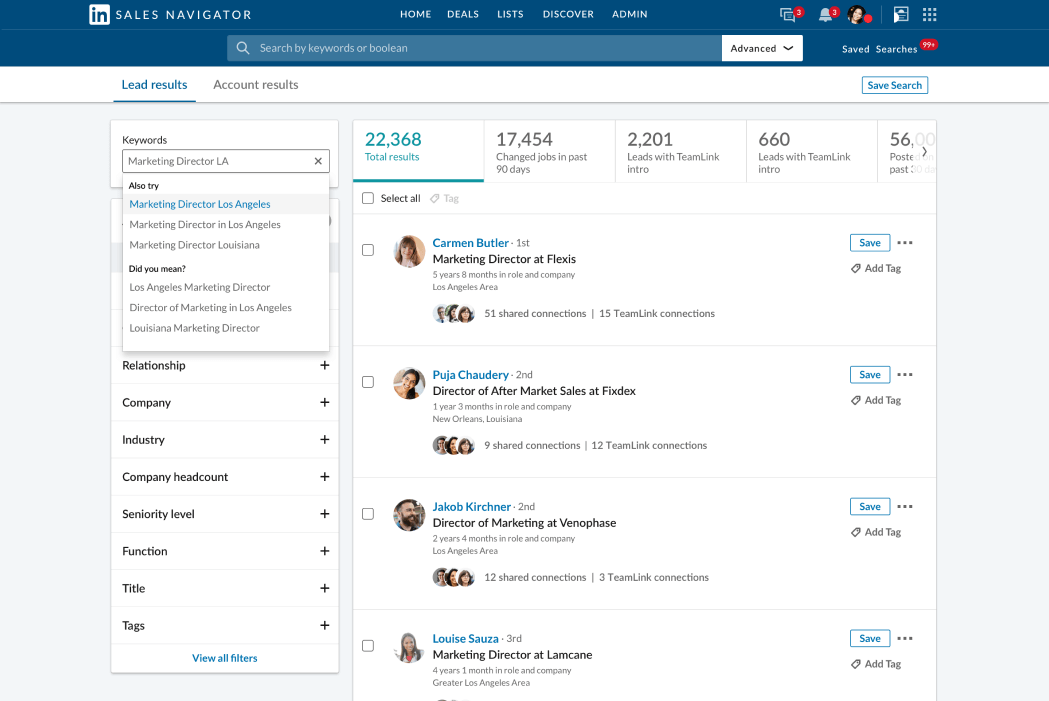
Step 2) Send them a personalized LinkedIn connection
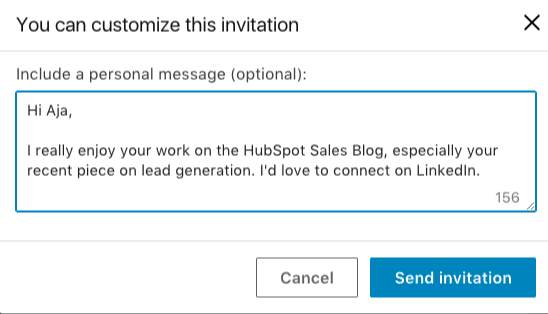
Step 3) Send a personalized follow-up message after they join your network and accept your invite.

Simple.
Notice how this is different from LinkedIn marketing where you’re posting organically or through paid ads.
According to Hootsuite, an Ad on LinkedIn can only reach 12% of the population.
Yes, your post can go viral, but the real money lies in perfecting your LinkedIn outreach.
If you’re still not convinced why LinkedIn Outreach is essential for the growth of your business, you can take a look at our stats below.
Just by taking LinkedIn Outreach seriously, we were able to generate a good amount of high quality leads for our clients.
So it’s time to do some “myth-busting” here regarding LinkedIn possibilities.
Myth #1) People or prospects that you don’t know will not connect with you.
False.
According to various research and our personal experience, 20-55% of prospects will accept if the message is personalized and you’re using 2nd-degree contacts. Take a look at the stats from 3 different campaigns we ran for our clients;
Client #1
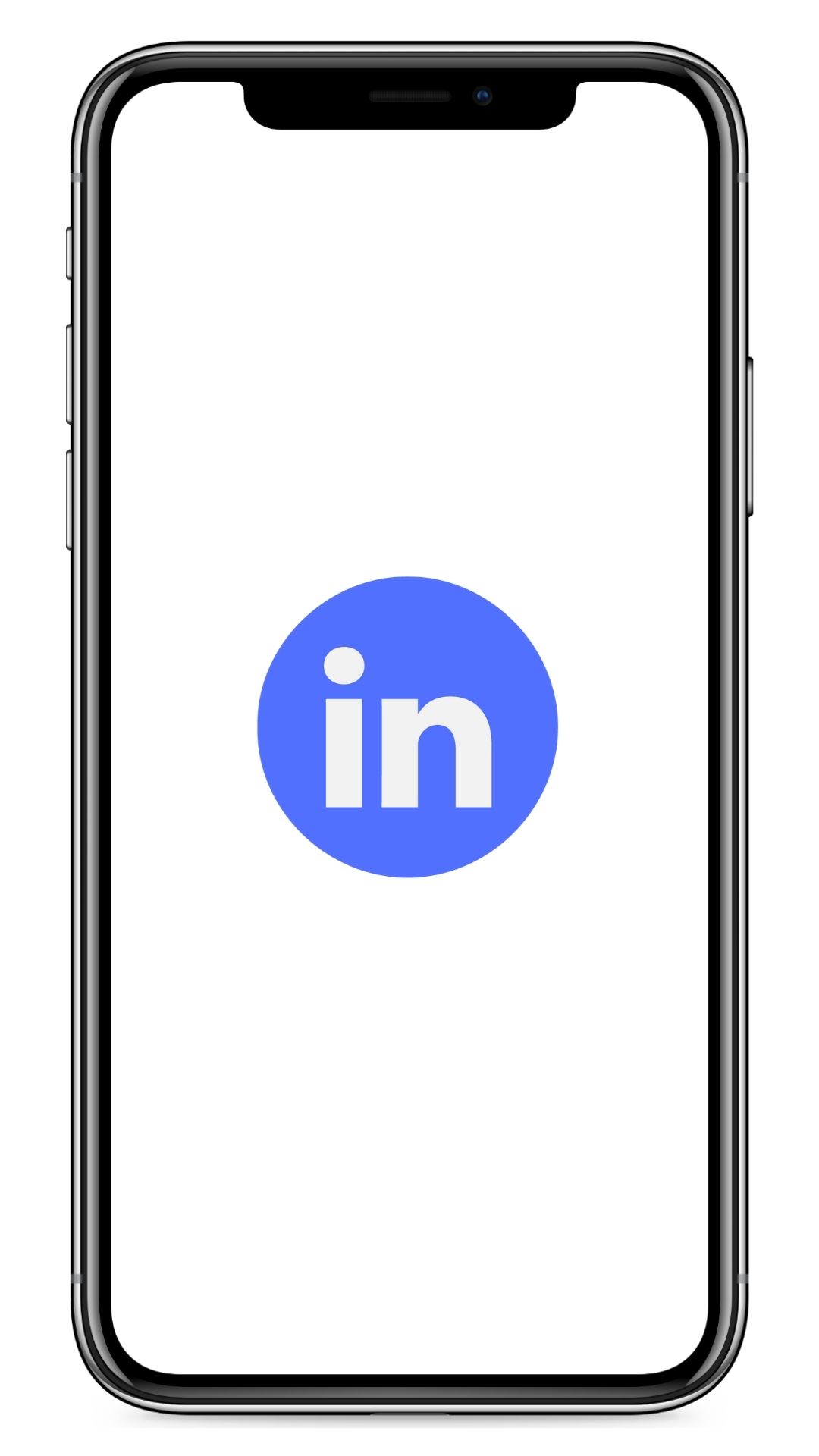
%
Connected out of all requests sent
%
Total replied after connecting
Client #2

%
Connected out of all requests sent
%
Total replied after connecting
Client #3

%
Connected out of all requests sent
%
Total replied after connecting
Myth #2) Too many salespeople are on LinkedIn and people don’t write back
False
According to Hubspot , only 10% of marketers say they’re investing in LinkedIn. LinkedIn research shows that sending a single, personalized message will increase your response rate by 30%.
Just check out some of the replies we got from prospects we contacted.






Why LinkedIn lead generation isn’t working for you.
We’ve established that LinkedIn Outreach is a powerful way to generate leads and skyrocket your social marketing efforts. What we need to solve is why it’s not working for you. Want to know the main reasons why you’re not getting the same results? The answers are pretty simple…
1) You’re not personalizing enough
News Flash:
There are 30 different “LinkedIn Automation” tools that will send a message to new contacts automatically. And your prospects know this. So many get ignored.
Why? We all have a filter for these “templates” and we can easily spot and ignore them.
Mental shortcut for removing noise and lame pitches.
BUT …
We get around this shortcut using LOTS of personalization. We already know that personalization is the heart and soul of getting busy people to reply to your messages.
If you want to generate leads and maximize your revenue, then you should take things a step further than simply mentioning your prospect’s name.
The truth is, personalization is more advanced than dropping your prospects’ names into a pre-written generic template and sending it to everyone on your contact list.
If you want to get your hands on a step by step guide to personalizing any LinkedIn messages, go here.
Follow the detailed LinkedIn Personalization guide I laid out, and I swear your results will soar!
Bonus:
Check out this video and make sure to watch till the end to find out how to personalize messages using the “CCQ Method.”
2) You’re being salesy, not social
Isn’t it annoying when a salesman knocks at your door and can’t seem to stop talking about himself? Well, that’s exactly how your prospects might feel if you’re too focused on yourself.
Remember, the real essence of marketing is more than selling your product or service.
It involves discovering their pain points. Marketing is convincing people that what you have to offer can make their lives easier. So I suggest that when you reach out to your prospects, don’t get too excited about dropping your offer. Take the time to ask questions about their problems.
Discover the issues they face, then demonstrate how your product or service can help them. Pro-Tip:
Our “formula” for writing LinkedIn messages is as follows: 90% about the prospect. 10% about your offer. That way, you don’t come across as ‘salesy’…. And your prospect still knows if there’s a potential fit in talking.
Example: Let’s break these real-life examples down to help you avoid getting your messages from being ignored, or worse, blocked by your prospects in the future.

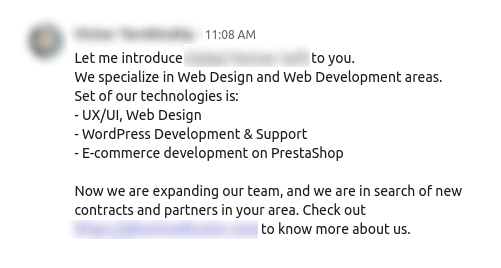
REMEMBER: Your purpose is to help them solve their problems, not sell your product/service. Don’t make them feel otherwise.
Your guide to testing your first batch of personalized LinkedIn messages.
Now, if you start personalizing your LinkedIn messages and focus on your prospects’ needs instead of yours, you’ll see a dramatic shift in your results.
Here’s how you can do this today:
Step 1:
Find your prospects. Use LinkedIn sales nav with industry, job title, and company size for starters. (Or Add a special filter like “groups” to further segment your hotlist)
Step 2:
Send personalized invite messages to your prospects. Mention that you both know people in common and a ‘clean’ version of their company name for best results.
Step 3:
Send 90/10 messages that are mostly about your prospect and invite them to a call.
Historically, based on stats, we see a 25% meeting rate when executed correctly.
I’m betting that it will only take about 2 days before your first lead comes in on average.
You only need to send 30-45 highly personalized and customer-focused connections to your prospects and watch your reply rates swell.
That’s our easy to follow formula for getting a 45% connection acceptance rate.
Want more qualified leads with your outreach efforts?
So if you want to get at least a lead a day without spending a dime on ads or wasting time strategizing your next move on social media, then try sending 30-45 highly personalized invite messages and 7 follow-up messages every day.
Or better yet, if you’re considering partnering with one of the top B2B lead generation companies let’s talk:
Schedule a free 15-minute strategy session with the Salesbread team and find out what’s working in your industry today.
